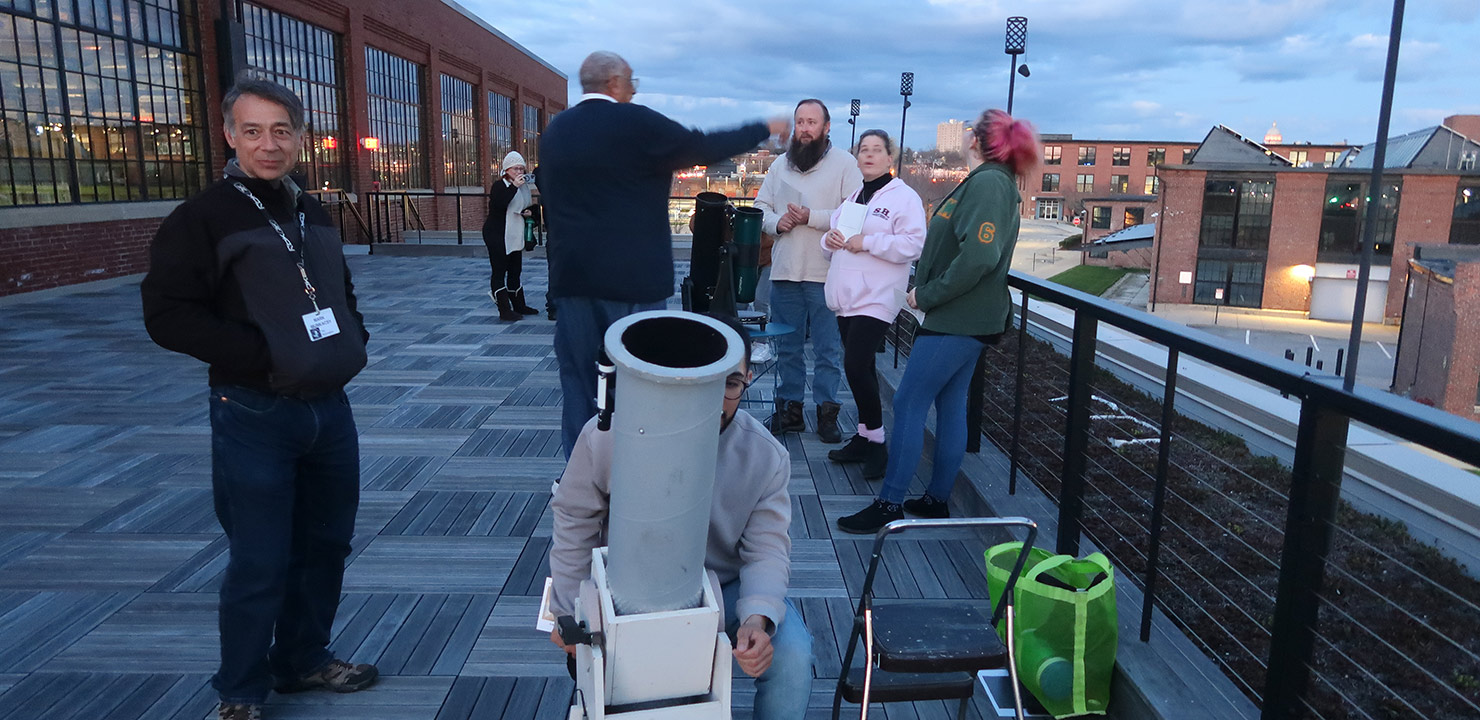
Astronomy at WaterFire Arts Center
by Jim Hendrickson
Skyscrapers, Inc. was Invited to participate in an event at WaterFire Arts Center on Thursday, April 7, to coincide with the exhibit “Planet Earth The Environment and Our Future,” the centerpiece of which is a 23-foot inflatable, illuminated Earth globe suspended from the ceiling.The Thursday was clouded out so the event was held on Friday, April 8.
Although sunset was at 7:18pm, we arrived a bit early to check out the exhibits, and then proceeded to go upstairs and set up.
The second floor roof deck is oriented to the southeast of the building, but provides good views of the sky all around. It is above the fully shielded parking lot lights, but other nearby lights and the ambient light pollution of Providence make dark sky observing conditions not possible.
Skyscrapers in attendance were Fred Sammartino, who brought a pair of large binoculars, Francine Jackson with a 4-inch refractor and Jim Hendrickson with a 3-inch refractor, Mark Munkacsy with his home-built 6-inch Dobsonian reflector, and Curtis Lotter who brought a 4-inch tabletop Dobsonian telescope.
The Frisby family (Solitaire, Lorenzo & Blaze) from the newly-formed Woonsocket Library Astronomy Club, mentored by Mark Munkacsy, set up an 8-inch Dobsonian telescope.
Finally, Ian Dell’Antonio brought out his 4-inch refractor.
As the Sun set, several clusters of lingering cumulus clouds slowly evaporated away, making for some dramatic sky vistas, and also enhanced the Belt of Venus to the east.
Limited to bright objects, we were fortunate to have a first quarter Moon shining almost directly overhead, which is also helpful to start a program that begins during twilight.
Although no bright planets were visible, we kept hoping to glimpse Mercury towards the northwest, but to no avail.
As the sky darkened, Fred pointed out several bright satellites and pieces of space debris passing over, even though there were no available sightings of the International Space Station.
Later in the evening, we were able to point to some of the brighter objects visible: the Orion Nebula and Mizar and Alcor in the Big Dipper.
In total, about 50 guests attended the night sky viewing, and as we were closing, I turned my telescope towards the slowly rotating illuminated Earth globe through the windows of the Arts Center. Through medium magnification the slowly rotating limb of the globe gave the appearance of looking out the window of the space station, and was a big hit with those who stayed late.



